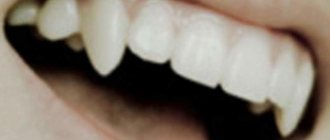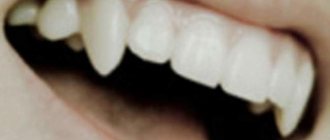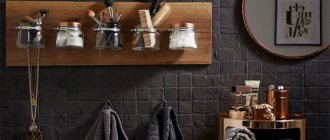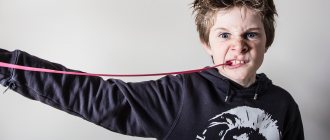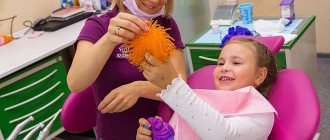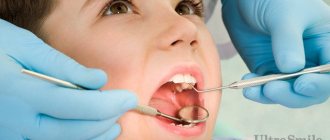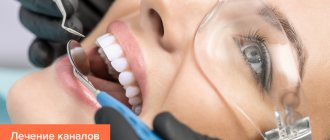Here you are for the first time holding your child’s hand, kissing his heels... This is a wonderful feeling! How we want to keep this feeling longer, because our children are growing so quickly. It seems that recently the baby grabbed his parent’s finger with his whole palm, but now this palm is already bigger than his mother’s!
A cast of our babies' hands and feet will help us regain that feeling of tenderness even after many years.
Fortunately for parents, there are now many options for making a memory impression. There are many craft kits in stores, and on the Internet there are many ways to do it yourself.
To get started, you need to prepare the most important thing - our model! Choose a moment when your baby is calm. If the baby's sleep is not very sensitive, you can do this while the child is sleeping. If your child is interested in cartoons, choose a moment when he is involved in watching. And, of course, make sure that the child is in a good mood and not hungry. Talk to him calmly and cheerfully, let him not worry about what strange manipulations his beloved mother is doing. If you are worried yourself, the excitement will be passed on to the baby.
This process should involve both of you as you create a real treasure for your future.
There are several ways to make your own impression. Let's look at the main ones.
This method is the fastest and is very easy to handle.
Colorful traces
The first thing that comes to mind to immortalize the hands and feet of a child is to dip them in watercolor or gouache and print them on plain paper or cardboard. Yes, this is not the most original method, but it is inexpensive and fast. To preserve this sheet for a long time, you can either laminate it or put it in a beautiful stretcher.
Simple clay mold
A trial plaster cast of the hand can be successfully cast into a clay mold. This will not be a full-fledged voluminous copy, but it will provide an opportunity to gain first practical experience. Clay is an affordable material, it can be used repeatedly after unsuccessful attempts, which is just right for beginners.
You need two pieces of board or plywood, 5 cm larger than your palm. Lubricate them and your hand with vegetable oil or Vaseline. This is necessary so that the clay does not stick. Place your hand on the board, press it tightly and begin to apply clay moistened with water and kneaded to a thick dough, pressing it well and compacting it.
The total layer should be at least 5 cm. Its top is leveled flat and covered with another board. The entire structure, together with the hand, is carefully turned over. The bottom board is removed and the palm is carefully released. The form for filling is ready. To obtain ideal castings, plastic molding compounds are used.
Plasticine legs
Another simple option for making casts of children’s hands and feet with your own hands is plasticine. The best choice is one that hardens itself in the air, or a special mixture for modeling. The mass should be flattened into a medallion and the baby’s hand or foot should be well imprinted in it. Be sure to make a hole before the plasticine dries so that the “home heirloom” can be hung on a ribbon.
Preparatory operations
Making a plaster hand on your own is possible at home without the use of any special technologies or special equipment. However, in order for the casting process to go smoothly, you need to carefully prepare. Different batches of gypsum (especially building gypsum) may have different setting times.
To find out for sure, it is best to carry out a test batch and pour a small amount of solution into any simple form. This will allow you to accurately calculate the proportions of gypsum and water and determine the time period within which the solution retains casting properties. Ultimately, this will help save material, time and nerves.
At the preparation stage, they determine the container for the mold, and also select a suitable vessel for mixing the gypsum solution. For one-time pouring, you can take disposable dishes. If you plan to continue casting, it is best to purchase rubber plaster for mixing the working solution.
Half of an old children's ball is suitable for these purposes. Dried plaster from the walls is easily peeled off when the rubber is deformed. The skin of the hand that will be immersed in the molding mass can be lubricated with a thin layer of castor oil or Vaseline.
Salt dough print
Many of us sculpted “salted” figures as children, and now, having become parents, salted dough will help us capture the tiny fingers of our babies. So, how to make casts of children's hands and feet from salt dough?
Dissolve half a glass of salt in a glass of water and add about a glass of flour (more is possible until the dough begins to stick to your hands). We divide the resulting mass into 4 equal parts and roll it out with a rolling pin into flat round pieces a couple of centimeters thick and the size of a child’s hand and foot. With the baby's dry, clean palms and feet, we press deeply onto each piece. If the cast is unclear or you don’t like it, you can roll the dough again and repeat the procedure.
When the cast is ready, let the dough dry for 2-3 weeks. After this, the dough can be painted with acrylic paints. As you can see, this method is quite painstaking, but the result will be durable and original casts of the child’s arms and legs made from salt dough.
Gypsum
There are many different materials available for mold casting. These are paraffin, wax, concrete, silicone, metals, even chocolate can be poured into food form. Nowadays plastic compositions and resins have become available. They all have their own specific casting features. To answer the question of how to make a plaster hand, you first need to understand what kind of material it is. It is also important to understand the technology of its casting.
Gypsum powder is a natural material. It is white or grayish in color, finely ground, and quickly absorbs moisture when water is added. It is obtained by firing gypsum stone and is distinguished by purpose: for medical purposes, for molding, for plastering work and for the production of slabs.
Gypsum for construction has a coarser grind, medical gypsum is the purest, and molding gypsum sets more slowly. A useful property for sculptures is an increase (up to 1%) of the working composition in volume. This extension makes it possible to fill in a small drawing of a form. When preparing the solution, within a few minutes it begins to harden and completely sets within 20 minutes.
Salt dough and plaster cast
An even more meticulous and unusual way to get prints (casts) of children’s hands and feet with your own hands is to plaster them.
To do this, we make the dough according to the recipe described above, and form prints in the same way, and it is better to make 2 times more dough so that the print is as deep as possible (2-3 cm in depth). We take plaster (a creativity kit from special art stores for children is best, but a construction kit can also be used). We dilute it with water in the proportion of 1 cup of gypsum to half a glass of water (it is important to add water to the plaster, and not vice versa). Add 2-3 spoons of PVA glue to make the resulting cast stronger. Mix everything very quickly and pour it into the mold with the dough.
Before the mass hardens, it is better to wipe off all the unsightly edges with a cloth, otherwise you will have to file them off later, which could damage the shape. Let the cast of the child’s hand (foot) harden with your own hands for a day. Plaster usually dries quickly, but in order for everything to turn out well, it is better not to touch it for several hours. After which the finished cast can be removed from the dough. We sand all the unevenness with sandpaper. You can decorate such prints with acrylic paint or make an interesting collage of children's photographs with them. The main thing is to approach the process with imagination!
Preparation of alginate mixture
Take a container and fill in the required volume of alginate. Then stir the mixture with a hand mixer (if you have one) and beat once with a beater.
Please note: small lumps in the wet mixture are not a problem.
Ratio:
- 20 ml water + 9 g alginate;
- 100 ml water + 45 g alginate;
- 1100 ml water + 500 g alginate.
Allow about 45 seconds for mixing and about 1 minute until you place the sample in the container.
The setting time of the alginate mass depends on the temperature of the water used . Warm water gives the alginate a shorter setting time.
Now immerse the sample in the alginate mixture without touching the edges of the container. When the mass becomes hard (rubber-like, elastic) and no longer sticky, carefully lift/pull the sample out of the frozen mass.
Sand casts
Another way to make your own impressions of children's hands and feet is to use sand instead of dough. The operating principle is the same. Pour sand into a deep container, moisten it with water so that it turns into a thick mass, but does not float in the water and the child’s print does not spread. We lower the baby’s leg or arm deeper (1-2 cm) so that an imprint remains, and take it out. Then we lower the plaster into the resulting mold (the proportions are described above) and leave it for several hours to harden. Then shake off the excess sand.
Features of the technology
Gypsum powder should be stored in a dry place. Wetted or damp material is unsuitable for casting; it does not set. Its characteristics also deteriorate from long-term storage. The gypsum working solution is prepared quickly. Due to prolonged stirring, it “rejuvenates” and sets weaker, which ultimately leads to a loss of strength of the finished product.
If the working solution has hardened before pouring is complete, it is no longer suitable for use. Adding water and stirring it again will not correct the situation. Liquid glue can help slow down the setting of the solution. It (3-4 spoons per bucket of water) is added first and mixed well.
The casting must be dried at temperatures up to 60 degrees. It is not advisable to exceed this limit - the material loses strength and begins to decompose. A do-it-yourself plaster hand is made taking into account all these nuances. To make the finished product stronger, the solution is mixed with lime milk.
Moisture and dampness have a negative effect on gypsum products, so they must be used and stored indoors, especially if they do not have a protective coating.
Casts from the finished set
Here were several ways to make casts of children's hands and feet with your own hands, but you can also use ready-made kits for creativity. They allow you to create high-quality “handles” and “legs” without using improvised tools; you just need to follow the instructions. There are 2D sets (only with prints), 3D (full palm and foot), as well as with the possibility of making a cast of a child’s hand together with an adult hand, casts in a frame, on a stand, in an album, with an engraved plaque and much more. The only drawback of this method is the high cost, but those who really know a lot about original and memorable items will appreciate it.
Idea
For lovers, a plaster cast of a pair of hands clasped together can serve as a gift for a significant date. Often this composition is ordered by newlyweds on their wedding day.
Parents order casts of children's hands and feet as souvenirs in addition to photographs and videos of their children. Such a souvenir, decorated in an elegant frame, can be presented to family and friends as a memory of a memorable date: a first or anniversary birthday, baptism, a child’s first independent step, etc.
You can create a whole collection of such casts, made during different periods of active growth of the child. Later, holding them in their palms, children may remember the happy moments of their childhood.
An elegant plaster hand, made and decorated with your own hands, can also serve as a detail of an original composition. This decoration, for example, can also be used as a mannequin for storing rings.
Manufacturing process step by step
- Step one. Prepare everything you need for work. Cut off the bottom of a five-liter bottle. Slide a rubber glove inside and secure it at the top of the neck with a hair tie. Make sure the glove is held securely.
- Step two. Pour plaster into a special bowl. Depending on the size of your glove, determine by eye how much plaster you need. Then add a little water and stir thoroughly. Ideally, the proportion of gypsum to water should be 6:4. After mixing, the gypsum should be similar in consistency to thick sour cream. You can stir the plaster with your hands, kneading it so that there are no lumps. Be sure to wear gloves before stirring, because the plaster hardens quickly and is very drying to the skin. Take care of your hands. You can use a whisk with a mixer or attach the whisk to a screwdriver. If you stir with your hands, remember: the plaster “lives” for ten minutes. So if you spend five minutes stirring it, you only have five minutes left to pour it into the mold.
- Step three. Pour plaster into the glove a little at a time. Check with your hand that the mixture is well distributed over the fingers of the glove. Take the bottle by the neck and shake it well, tapping it on the surface you are working on. Pour more plaster and shake, then add almost to the very top of the glove and shake again.
- Step four. Leave the plaster to dry. It usually takes 10-15 minutes for the plaster to harden, but it will still be better if you pour it in and leave it for a while while you go about your business.
- Step five. Remove the glove from the bottle, take the scissors and carefully cut it. But that is not all. Now the hand needs to be treated.
- Step six. Take a utility knife and carefully cut off the unsightly edges at the base of the plaster brush. You can also use a knife to scrape away any unevenness or roughness. You can use sandpaper instead of a knife. But be careful not to overdo it and grind your hand into dust. If you were unable to avoid air bubbles and there are still cavities on the plaster arm, you can try diluting a little more plaster and carefully covering up the imperfections.
- Step seven. Take acrylic paints. You can choose any color you like, but we still recommend taking white to start with. Cover the surface of the plaster hand with paint and wait for it to dry.
- Step eight. Take napkins with drawings and cut out the pictures you like with which you would like to decorate your plaster hand. Remove the white layer from them, there are usually two of them on napkins. Apply them to the plaster hand where you want, on the paint that is not yet completely dry, so that the picture sticks. Repeat as many times as you wish.
- Step nine. Cover your hand with clear acrylic varnish and leave to dry.
- Step ten. After completing all the previous nine steps, your product is ready.
How to make a plaster hand yourself to make copies?
Having mastered the technology of casting and making molds, you can try to expand the range of products. A copied plaster hand, made with your own hands, can serve as a detail of the original composition.
For example, if cast in the position of holding an object, it can serve as a phone stand. In another case, it could be the base of a candlestick or table lamp. You can install a decorative glass in a plaster hand and this composition will turn into a pen holder or an original flower vase.
For mass copying, it is not practical to produce disposable forms. In this case, elastic silicone is better suited. Molds made from this material can be reused many times. To remove the casting, they are cut on one side and the copy is carefully removed.
The silicone is installed in the container in which it was poured during manufacture, and the process is repeated. To make it easier to remove castings, release agents can be used. In such molds you can pour not only plaster, but also paraffin, tin or chocolate. The authors' imagination is limitless - the main thing is not to be afraid to experiment!
Next stage
Next, you need to make impressions from plastic. To do this, a heavy piece of plastic that has already been worked out in your hands needs to be placed on top of the test base and carefully pressed through all the contours of the handle. The better the contact between the two layers, the more natural the craft will look. If the plastic is fresh or was stored strictly in a sealed bag, then working with the material is a pleasure. If there was access to air, you will have to work on it in advance. While the dough is drying, you need to knead the plastic in your hands every day so that it spreads a little.
Pouring into the mold
A do-it-yourself plaster hand is made by casting into a prepared mold. The solution is added in portions. If you fill a complex form with it all at once, air pockets may form in it. The gypsum solution does not get into such voids; as a result, the finished model will have defects.
To avoid this, the mold is turned in all directions after pouring in the first small part of the working solution. So it spreads over the inner surface and gets into all the recesses. The air inside does not accumulate and is gradually displaced.
With the next portion, the gypsum solution is deposited on the walls more and more, its layer becomes thicker. Once the complex undercuts are completely filled, the remaining plaster can be poured.
You can make your own crafts from plaster
It is not difficult, but exciting, you will gain new experience and surprise your loved ones.
You can make plaster figures with your own hands in various ways:
- Pour plaster into the prepared mold.
- Create a mold from an existing figurine and pour plaster into this mold.
- Apply plaster to the surface of objects, and then, after drying, carefully remove.
- Cover the object with plaster and leave it like that.
- Create molds from plaster with your own hands, for example, flower pots.
The last point mainly concerns organic objects, such as flowers or leaves, for example.
Finishing
How to make a plaster cast of a hand into a finished composition? To do this, it needs to be painted. For some, the ideal option would be tinting with gold or bronze paint. Another will choose nude or white.
Acrylic emulsion is suitable for decorative coating, but its layer, although thin, can smooth out small lines and folds on the cast. Although, if the copy turned out to be imperfect, then this option is quite suitable. If you need to preserve the smallest details, it is better to use spray paint.
Before finishing, the cast is inspected, all irregularities are polished, and defects are corrected. In order for the paint to lay down in an even layer, the workpiece can be pre-primed, allowed to dry and then sanded again with fine sandpaper.
For installation, select a decorative base at your discretion and mount a copy of the hand or a composition with it on glue. After drying, the souvenir can be varnished for greater effect.
Types of impressions
Impressions are divided into anatomical and functional. In the first case, the construction is manufactured without taking into account the characteristics of the tissues that are located on the border of removable dentures.
In the process of creating functional structures, medical instruments are used, selected in accordance with the individual characteristics of the patient.
Due to this, the mobility of the soft tissue folds located on the border of the implantation bed is reflected on the impression. A functional impression is indicated for patients who have lost all or part of their teeth.
Functional type products are classified into types:
- Compression. Used to take an impression of the lower jaw.
The products reflect the relief of the base of the prosthesis and allow you to redistribute the load during chewing over a larger area of its base. Due to this property, premature atrophy of bone structures is prevented. To make a compression print, materials with high viscosity values are used. - Unloading. The base of the prosthesis made from the unloading cast will have the shape of uncompressed mucous membranes.
This type of device is recommended for people whose professional activities involve speaking. The load during chewing will be distributed unevenly due to the mismatch between the relief of the bone tissue and the base of the prosthesis. - Combined. Necessary for creating devices that compress the pliable and unload the sedentary areas of the mucous membranes of the mouth located in the prosthesis area.
Thanks to differentiated impressions, implants are created that provide an even load during chewing or speaking.
